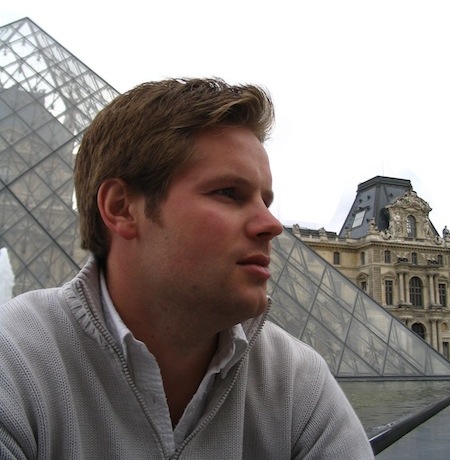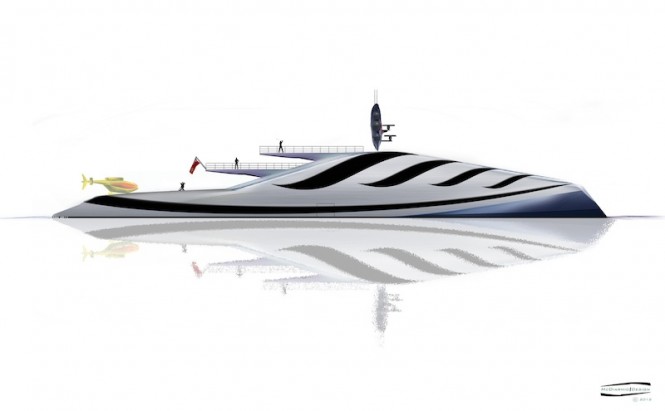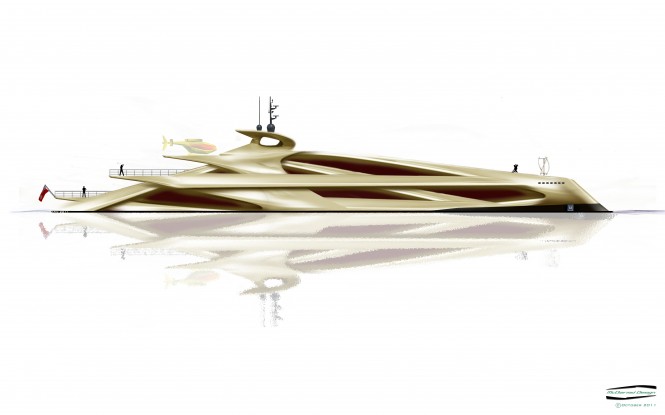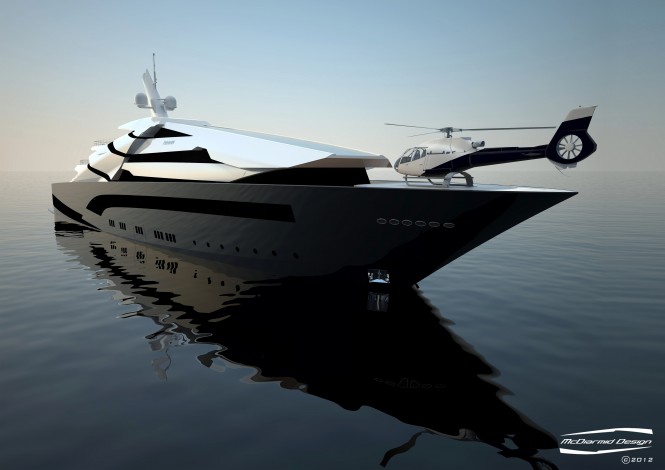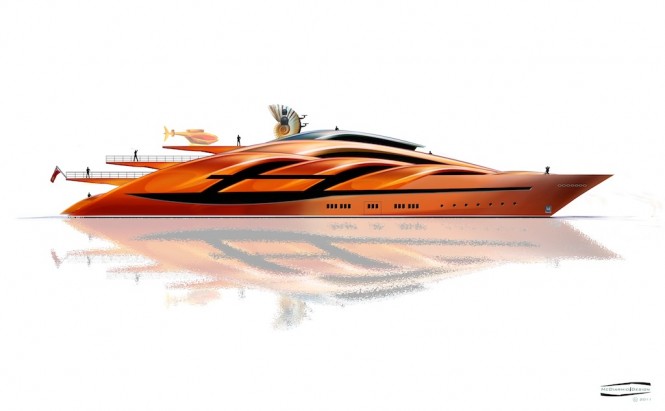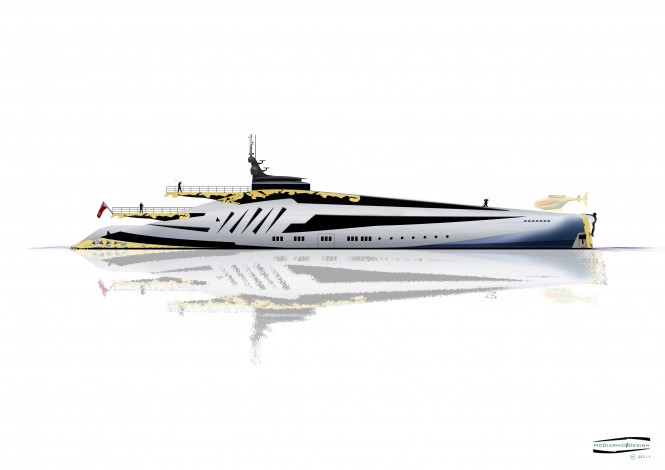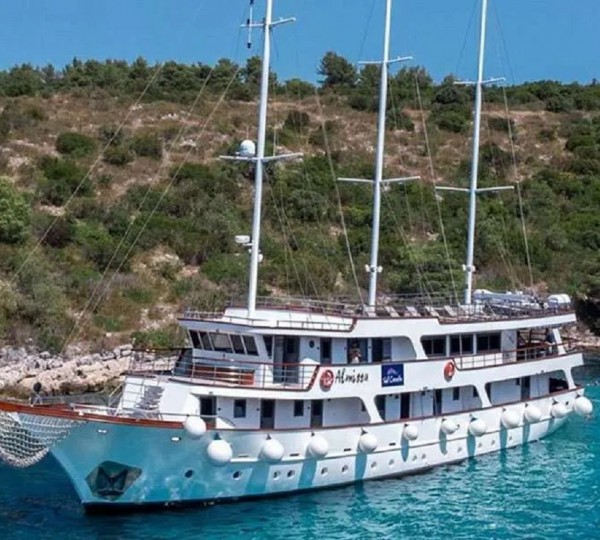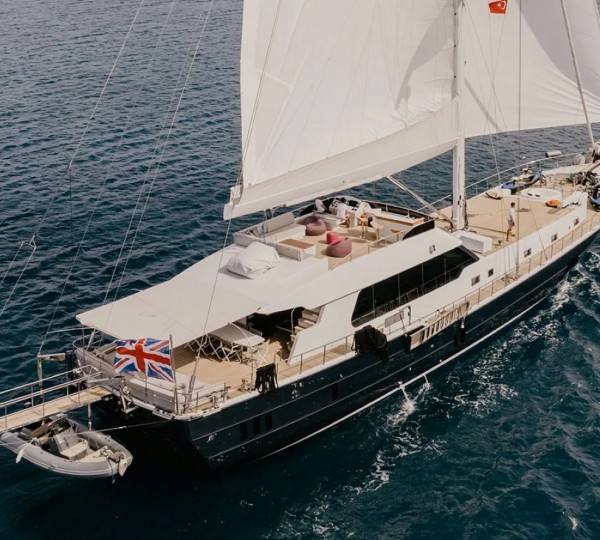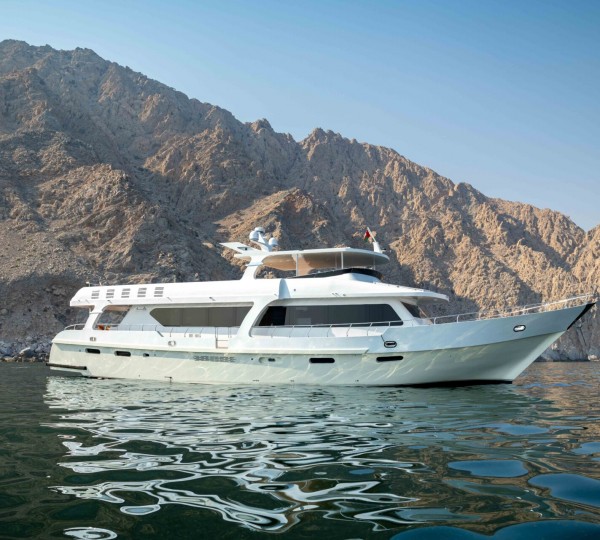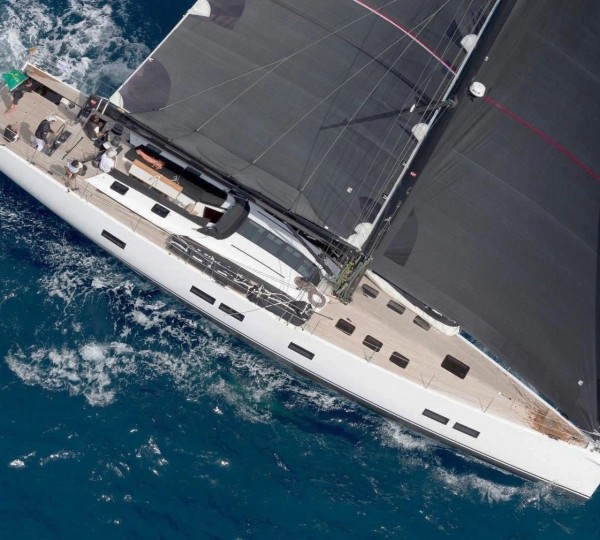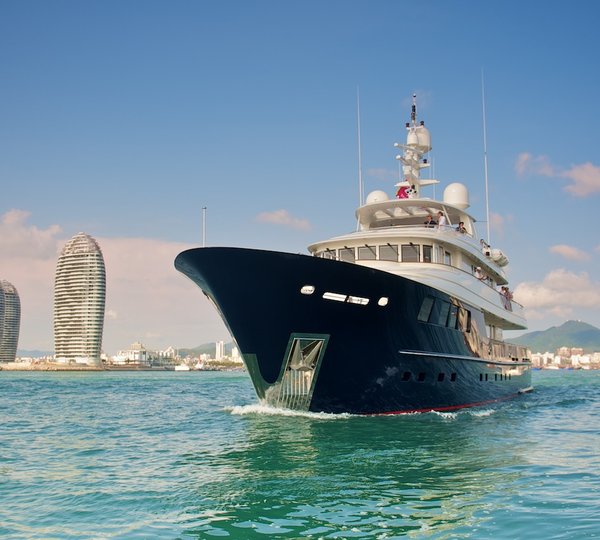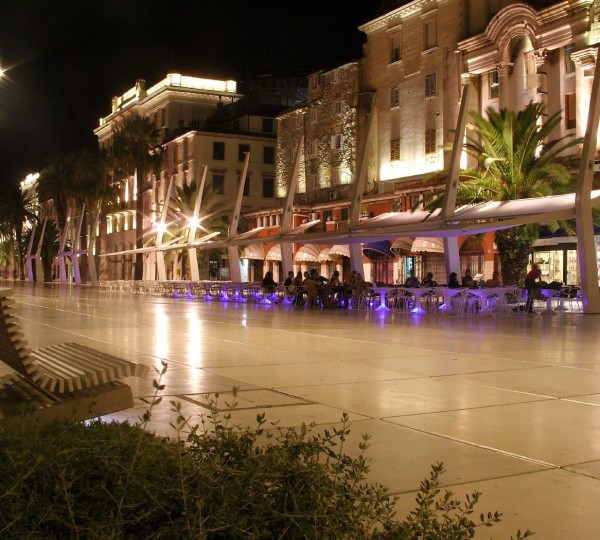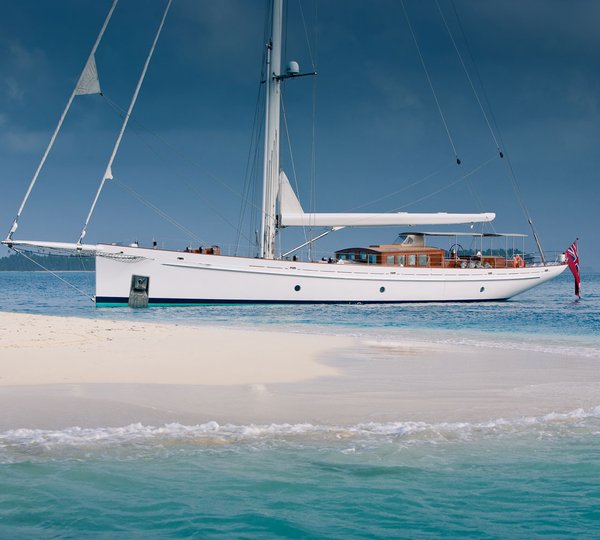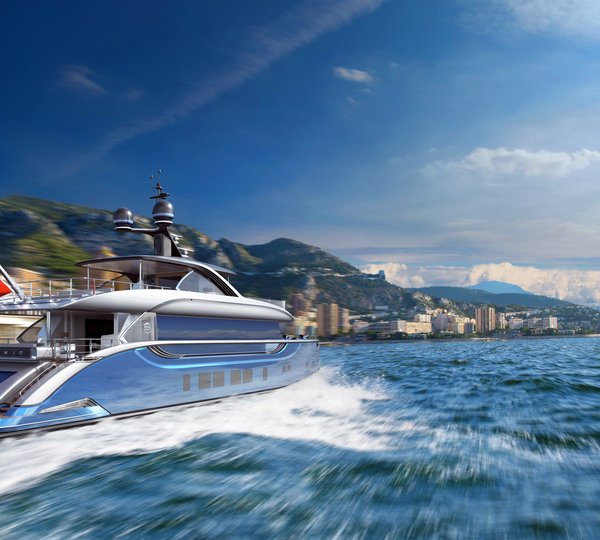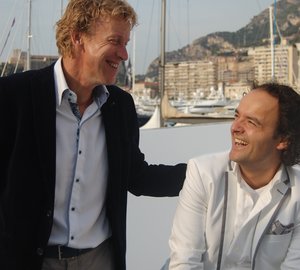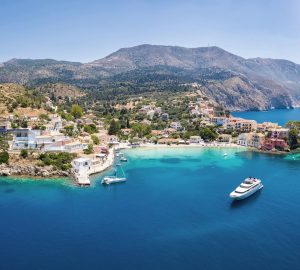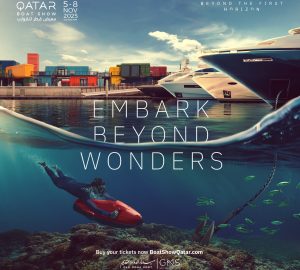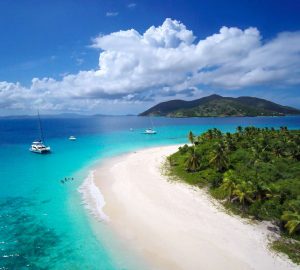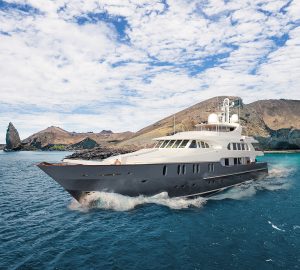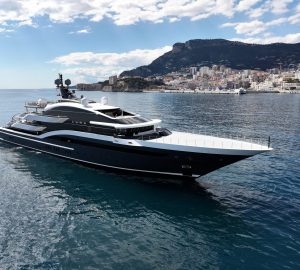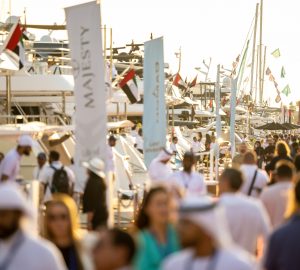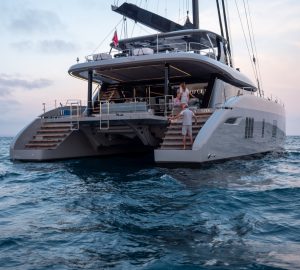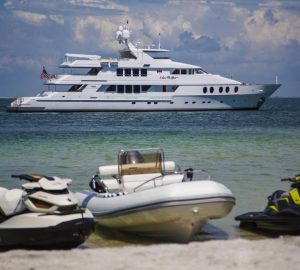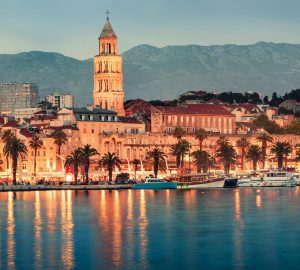Alex McDiarmid’s extraordinary luxury yacht concepts draw attention and open discussions wherever they appear, inspired by some of the most unusual objects, pushing the boundaries of naval architecture and design. His latest Explorer Project Penna as well as his previous motor yacht concepts Iwana, luxury yacht DNA or Conch, amongst others, open up the window to the future of new generations of superyachts. Alex McDiarmid’s designs are here not to please everyone, but to please the ones who decide to fight against the ordinary.
CW: CharterWorld has been following your luxury yacht design work for quite some time now. All of your designs have many common elements and your distinct style is present in each one of them, yet each one of your creations is very unique and very much out of the ordinary. It is known that your inspiration is always diverse and comes form a non-nautical philosophy. No exception to this is your latest ‘Penna’ superyacht concept. What inspired you this time around?
Alex McDiarmid: Quite literally the inspiration for Penna fell out of the sky!
They say designers can be inspired at any time and this was no exception.
Our studio overlooks a private woodland garden and attracts a lot of wildlife where I observed two birds jostling for position in the trees, feathers were flying.
I collected two of the feathers and saw that they were different in style and form. Upon some research I began to see the form of flight and tail feathers and how they could lend themselves nicely to the profile of a explorer style Superyacht.
Feathers are beautiful, organic forms. Simple on first appearance yet highly complicated overall design structures. Penna is Latin for feather and Mother Nature really is the master of design.
CW: Who is project Penna for?
AM: This is a project for the future and the yachts of the future will be determined by the client of the future, the new breed of client, younger and with a sense of modernity, style and a taste for something different. A piece of floating artwork if you like, something that does not necessarily follow the norm of traditional yacht styling.
Everybody has dreams but few can realise a project of this magnitude.
There is no one typical yacht owner and if they are spending ‘X’ amount on a yacht, a one off, owners know what they most definitely do not want.
China immediately along with the other BRIC countries is/are the future of yachting. The new generations of yacht owners are quite literally in the making, the new HNWI and UHNWI’s are emerging and looking for their first yachts. The whole concept of yachting is still very much in its infancy in China but things are changing at a very fast pace along with a younger owner who are looking for something different.
However it is particularly important not just to understand the cultural sensitivities of potential owners but recognise the major differences between Eastern and Western clients. Very different in all manner of yacht and new build commissioning, how and what the yacht would be used for yet one common factor unites; all owners are looking for something that is unique to them.
CW: Every designer needs to keep in mind the shipyard’s ability to produce. What kind of shipyard do you think could take on a project like Penna?
AM: Any of the well known/big name European yards could take on the project but bear in mind there are established Asian shipyards, run and managed by Western technical competence with Asian experience and financial backing that are producing some very well produced yachts and boats.
CW: Cost is also an important issue nowadays. Constructing an innovative, custom made yacht results in being more expensive than going for a more traditional style. Is cost-effectiveness something that you keep in mind while creating your projects?
AM: If you are going to construct an innovative, custom made Superyacht you probably won’t need a lecture on cost. These projects are dreams that have the potential to meet reality. They must first jump the hurdle to make engineering reality but we must remember that these are the dreams of owners who are the sole reason there is a superyacht industry in the first place.
CW: Ecology and environment is another important issue. How did it affect your design process when creating project Penna?
AM: Like many industries “Green” continues to be a fantastic marketing tool. Green really is in. People want green, they want fuel economy but do they really understand the environmental impact when manufacturing a superyacht? Do they even care?
With all of our projects we are very conscious of the need for eco-friendly features to be incorporated into our designs.
A ‘green/eco-friendly’ superyacht today looks at the resistance of the hull in the water to reduce power consumption, clean, hybrid electric propulsion, 100% LED lighting both on board and under water, recycling of energy to power systems and water recycling.
If you stop and think about the raw materials needed in the construction of a yacht, the manufacturing processes, let alone fuel consumption for the yacht, our industry is a long way from green yachting. I really do not think we will ever see 100% green. However, we can do more to reduce the environmental consequences through manufacturing and fuel consumption. Yachts can be made more efficient but 100% Green does not exist. It is a clever marketing tool used across many industries.
Less resistant hulls are being developed but we are we really seeing great advances in propulsion efficiency? Modern build materials are developing at a faster pace with carbon composite construction methods coming from other industries offering performance and weight saving gains along with reduction in propulsion requirements.
The various systems used on a yacht have a wide scope for development. Heating and ventilation, lighting all demand a lot of power. One solution could be to recycle or use waste energy produced by the yacht to power, light, ventilate and heat the yacht. When specifying a project of this size, the latest ‘Green’ solutions should be implemented.
CW: Your designs can be described as futuristic and quite different to the traditionally styled superyachts that are still more popular amongst private yacht owners or yacht charterers. What is your view on this and do you believe this could change in the future? Would more and more customers desire vessels that stand out?
AM: Our innovative designs are controversial in the highly conservative and often bourgeois yachting community. They often provoke a “love it or hate it” response from many, yet are described as stunning pieces of floating sculpture on a grand scale.
However the industry is starting to show signs that exploring other possibilities and solutions are possible. As a designer I always question “why”, “why not?” and “what if?” in all of my projects. This critical importance is something that was instilled in me during my early design career which ultimately led me to ask:
“Why should a yacht have to follow the concept of a yacht just because it is a yacht?”
Science will dictate a hull’s ability through water but above the water line it is for the designer to explore and push boundaries.
People are split between two camps: those who are bored with traditional white, ‘wedding cake tiered yacht design and those who are very skeptic about new concepts.
When you look at some of the superyachts that have come out of the world’s leading shipyards recently, ‘stand out’ designs are catching on in real life that reflect the personalities of their commissioning owners both through the exterior styling and interior decor. Radical styling is still the exception rather than the norm but with the economic recovery we will discover the next generation of owners who will be more avant garde in their taste and like some artwork, certain future superyachts will provoke a reaction.
One thing for sure the process of design is very much alive and clients want something new for this very personal and unique yacht they are about to commission.
It is the responsibility of the designer to listen and guide their clients.
I look at Superyachts as if they are in the art and science spectrum, blending art and science while mixing fantasy with reality. We have the future to discover and if you cannot imagine it, you cannot build it…
CW: Dale Harris once said: “Good ideas never go out of style.” What do you think are the main design elements to consider when it comes to designing a superyacht that will stand the time, yet remain unique all the way through?
AM: A visionary owner and designer are catalysts that create the elements.
If we talk about design elements, clean shapes, good proportions, not too many decorative details, although success is in the detail. For our industry innovation is also a key factor.
However, the unique element in itself is the brief from the future owner given to the designer. A unique set of elements, both creative and practical usually form the base of this document. Every owner is different whether experienced or first time builder yet they do share one common trait, they know what they don’t want. Every designer will claim to have a unique design process, to have created the most technically advanced and revolutionary design ever, but it ultimately comes down to the relationship between client designer and builder.
If all are visionary the results can be spectacular.
The core elements of light and sound must not be overlooked. A yacht is still a space and letting as much natural daylight in should be a goal while avoiding a ‘floating greenhouse’ effect. A well insulated and sound proofed yacht will only heighten the enjoyment of being aboard. Regarding the engineering and structural elements, loads acting on the hull and stability become the food of obsession for the naval architect and are the most important elements to the yacht design process. Not only must the yachts hull and structure be durable and float it must battle the natural elements and forces it will encounter. When designing a yacht, constraints by the many rules and regulations as specified by the various classification bodies dictate certain elements for safety, security and integrity.
With regards to daily yacht operations ask any crew member that in order to do their job properly, circulation and access to technical areas on board the yacht will ultimately allow the yacht to function more efficiently and for the owner to have a pleasurable yachting experience. If possible, independent/hidden/ discrete crew passage ways to navigate throughout the yacht away from the owner and their guests offer another level of service allowing the two elements of service and private habitation to work in parallel without interfering or crossing with one another. This is where the real ‘yacht design’ starts behind the pretty/beautiful/stunning exterior styling lines starting with the General Arrangement GA drawing determining such circulation demands, issues and function.
A design that stays in the memory of those who see/use it, a design that is innovative, a design that has its place in history, or even helps change history but most importantly a design that improves on the past. An iconic design is usually a design that is ground breaking and one that sets new standards in its field.
CW: Increasingly superyachts are designed with yacht charter in mind. Do you believe project PENNA could become a good charter yacht?
AM: Why not? Based on a Explorer yacht, if you are looking for something different in terms of destination, equipped with tenders and toys, a sailing yacht, submersible and helicopter on board, there could be many adventures ahead for charterers of Penna.
CW: What are the most important requirements when it comes to designing a luxury yacht specifically created for charter?
AM: To give those chartering the yacht a very memorable time whilst onboard, while experiencing the best coastlines and the most spectacular locations around the world.
Equipped with the very best of everything giving a truly luxurious experience with personal service and experience second to none.
The yacht could be chartered as a vacation and/or as a try-before-you-buy, but none the less, remember who is going to use her, good guest and discrete crew circulation. If she is beautiful both on the outside and in, even better!
CW: Are there any new superyacht projects that you are currently working on that you would like to share with our readers?
AM: Yes, but unfortunately we cannot share any details at present.
Note: Read more about 100m Explorer Yacht Project Penna …

